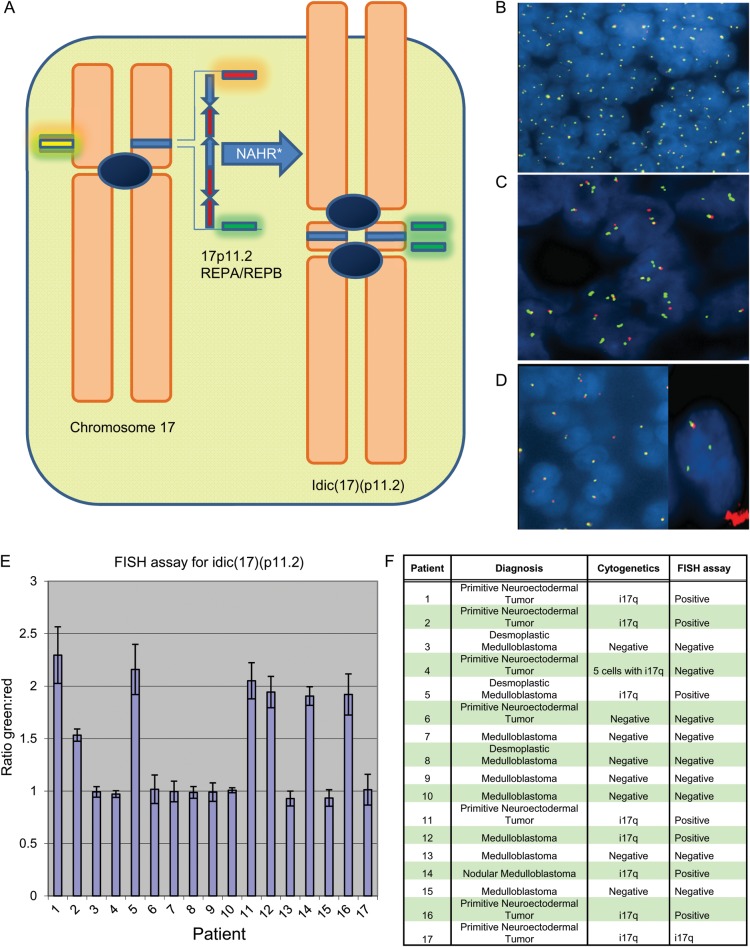Fig. 1.
(A) Schematic of chromosome 17 and the formation of idic(17)(p11.2). The figure on the left represents the archetypal chromosome, as well as the location of the probes from the FISH assay. The REPA/REPB region is located in chromosome 17p11.2, and is the likely site of NAHR, resulting in the isodicentric chromosome. The FISH probes flank this region. The figure on the right represents idic(17)(p11.2), as well as the resulting fluorophore hybridization locations. (B) An example of a negative test in this assay, with a 1:1 ratio of green:red signals, which frequently appears as yellow fusion signals due to the close proximity of the two probes. (C) An example of a positive test result. There is a 3:1 ratio of green:red flourophores, with a doubling of the green signals and loss of the red signal in the isodicentric chromosome. Occasionally, the chromosomal breakpoint within chromosome 17p11.2 is close enough to the centromeric green hybridization location that the doubling effect is not seen, resulting in a 2:1 green:red signal ratio. (D) A 1:1 green:red fluorophore ratio can be seen in i17q with breakpoints centromeric to the REPA/REPB region, but the presence of only one pair of signals in most nuclei is suspicious for a rearrangement. In such cases, i17q is confirmed with a second FISH probe pairing with the green fluorescently labeled probe hybridizing to distal chromosome 17q (right image). (E) Validation set results. ImageJ was used to analyze 17 cases from TCH in a blinded fashion. Thousands of green and red signals were counted per case, resulting in the ratios shown. Those with statistically significant increased ratios were considered positive. Most positive cases had ratios in the 1.5–2.5 range, while all the negative cases had overall ratios very close to 1.0. (F) Validation set results (unblinded). Patient 4 is the false negative in our test. Patient 17 had an abnormal signal pattern (1:1 ratio of signals, but a single signal set per cell as seen in Fig. 1D), suggestive of i17q but a normal ratio by our assay. i17q was confirmed with a second set of 17p and 17q probes.

